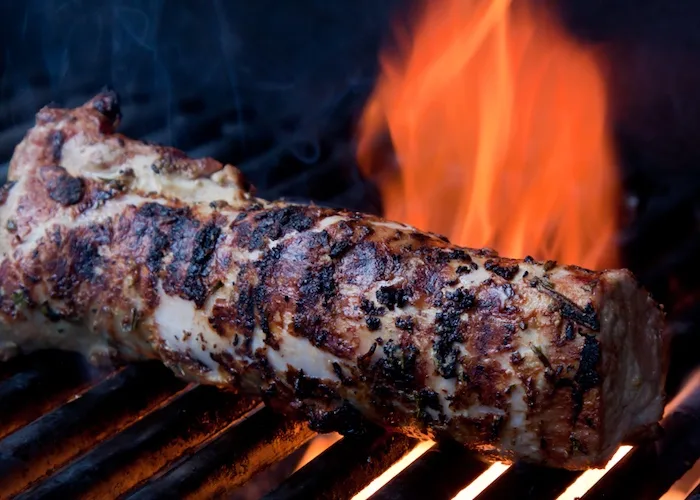5 Secrets to Tender Meat

Buying
Obviously, more expensive cuts of meat are going to be better quality and more tender than cheaper cuts, but if your budget is limited or your options are limited, we’ve got a few tips. Look for meat with a fine meat grain. Tender meat will have fine clusters of muscle fibers and feel soft to the touch. Try to purchase meat cuts with fewer muscle groups, but one muscle group in a cut of meat is best. Choose meat cuts with less connective tissue and little to medium amount of fat marbling depending on your personal preference.
Storing
A great option for tenderizing meat is to wet-age your meat during storage. Wet aging meat involves vacuum sealing meat during refrigeration. The natural enzymes in the meat’s juices break down the connective tissue within the meat, and unlike dry aged meat, no volume is lost during the process. In order for this to be done safely and properly, make sure you know when the meat was killed and packed. Make sure the packaging has no leaks and is still air-tight. Refrigerate the meat for 21 to 42 days in a temperature and humidity-controlled space. Exercise caution when using this technique so that meat does not spoil.
Preparing
When preparing meat to be cooked, a great option for naturally tenderizing your meat is to use a marinade. Not only will acid within marinades break down the connective tissues and leave your meat more tender, but marinades will also add great flavor to every bite. Click here to view our line of 11 renowned marinades and 4 distinctive sauces. Be careful not to marinade meats too long or they can become mushy. For tips on how long to marinate different types of meat, click here. If you don’t have enough time to marinate your meat before cooking, another great option is to use a meat mallet to break down tough meat fibers. Only light pounding with the rough edge of a meat mallet is necessary. If you don’t have a meat mallet available, you can score the surface of your meat lightly with a knife in a crosshatch pattern or poke small holes into the meat using the prongs of a fork.
Cooking
If you’ve got a tougher cut of meat, cooking methods can be a great way to still serve a tender cut of meat with your meal. Low and slow cooking methods can help to tenderize tough meat cuts. An easy, low maintenance way to achieve this is by using a slow cooker. Set the meat to cook at a low temperature for 8-10 hours, and be sure to add a sauce, marinade, or broth in order to keep your meat moist and flavorful. Another cooking method that’s great for serving tender meat is sous vide. With this method, meat is vacuum sealed and then cooked in a temperature controlled water bath.
Serving
Cutting meat before it has had an opportunity to rest can leave you with dry, tough meat. Allow meat to rest before serving in order to allow the meat to redistribute the juices between muscle fibers and retain the moisture. After resting, slice against the grain of the meat in order to make chewing effortless as the meat fibers naturally fall apart in your mouth.
FAQ: Secrets to Tender Meat with Allegro Marinade
Allegro Marinade helps break down the muscle fibers in meat, making it more tender and flavorful. The blend of acids, oils, and spices penetrates deeply, ensuring a juicy and delicious result.
The recommended marinating time varies depending on the type of meat. Generally, marinate chicken for 1-3 hours, pork for 3-6 hours, and beef for 6-24 hours for optimal tenderness and flavor.
No, it is not safe to reuse marinade that has been in contact with raw meat due to the risk of bacterial contamination. Always discard used marinade or boil it if you wish to use it as a sauce.
es, Allegro Marinade is versatile and can be used on various meats, including beef, pork, chicken, lamb, and even seafood. Each type of meat may require a different marinating time for best results.
Absolutely! Allegro Marinade enhances the flavor and tenderness of meat, making it ideal for grilling, roasting, baking, and even slow cooking.
Place the meat in a resealable plastic bag or a shallow dish and pour Allegro Marinade over it. Ensure the meat is evenly coated, then seal the bag or cover the dish and refrigerate for the recommended marinating time.
While Allegro Marinade is flavorful on its own, you can customize your dish by adding herbs, spices, or our Allegro Seasonings to complement the marinade and create unique flavors.
Allegro Marinade is available at many grocery stores and online retailers. Use our store locator or purchase our products directly.
Some Allegro Marinade products may contain common allergens such as soy or gluten. Check the label for specific ingredients and allergen information.
Store unopened Allegro Marinade in a cool, dry place. Once opened, refrigerate the marinade and use it within the recommended time frame indicated on the label.








